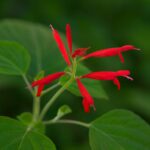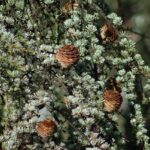The successful establishment of a wild service tree begins with thoughtful planting and an understanding of its propagation, processes that are fundamental to its long-term health and vitality. This native European tree, prized for its beautiful form, attractive foliage, and valuable timber, is a long-term investment in the landscape. Whether you are starting with a nursery-grown sapling or propagating your own tree from seed, a correct and careful approach is essential. Proper planting techniques ensure the tree quickly establishes a strong root system, while knowledge of propagation allows for the creation of new trees that carry the genetic legacy of a favoured specimen. This article will guide you through the critical steps of site selection, the planting process, and the primary methods of propagation, providing a solid foundation for cultivating this distinguished species.
Selecting the ideal planting location
The first and most critical step in planting a wild service tree is selecting a location that meets its specific needs, as this will dictate its growth and health for decades. This species is naturally found in deciduous woodlands and thrives in conditions that mimic this environment. It prefers a position in full sun or light, dappled shade. While it can tolerate a fair amount of shade when young, ample sunlight is necessary for mature trees to develop a full, balanced crown and to produce an abundance of flowers and fruit. Therefore, choose a spot that receives at least six hours of direct sunlight per day for the best results.
The soil conditions of the chosen site are of paramount importance. The wild service tree performs best in deep, fertile, and well-drained soil. It has a notable preference for soils that are neutral to alkaline and is often found growing naturally on limestone-based soils. Before planting, it is wise to assess the soil’s texture and pH. If your soil is heavy clay, which can become waterlogged, it will need to be amended with organic matter like compost and horticultural grit to improve its structure and drainage. Conversely, for very sandy soils, incorporating compost or well-rotted manure will help to retain necessary moisture and provide essential nutrients.
Consider the tree’s ultimate size and spread when selecting its home. The wild service tree can grow to be a substantial tree, reaching up to 25 meters in height with a broad canopy. It is crucial to plant it far enough away from buildings, power lines, and other infrastructure to avoid future conflicts. Also, allow sufficient space between it and other trees to ensure it receives adequate light and air circulation as it matures, which will also help to prevent the spread of diseases. Planning for its mature size from the outset prevents the need for drastic and potentially damaging pruning later in its life.
Finally, think about the local microclimate of the planting site. While the wild service tree is hardy, young trees can be vulnerable to harsh conditions. A location that offers some protection from strong, prevailing winds is ideal, as this will prevent windburn on the leaves and reduce the risk of branches breaking. A site with good air movement is still important to deter fungal diseases, so avoid frost pockets or stagnant, damp corners of the garden. Choosing the perfect location is a proactive step that will save a great deal of effort and potential problems in the future.
More articles on this topic
The planting process step-by-step
Once the ideal location has been chosen and the soil prepared, the next stage is the physical act of planting the tree. The best time to plant a bare-root or root-balled wild service tree is during its dormant season, from late autumn to early spring, as this minimizes transplant shock. Container-grown trees can be planted at any time of year, but autumn planting is often most successful as it allows the roots to establish over the winter. Begin by digging a planting hole that is roughly twice as wide as the tree’s root ball but no deeper. It is crucial that the tree is planted at the same depth it was growing in the nursery; look for the soil mark on the trunk as a guide.
Carefully prepare the tree for planting. If it is a bare-root tree, soak the roots in water for a few hours before planting. For container-grown trees, gently remove the tree from its pot and inspect the root system. If the roots are tightly coiled or circling, carefully tease them out to encourage them to grow outwards into the new soil. Any damaged or broken roots should be cleanly pruned off. Place the tree in the center of the hole, ensuring it is upright. Use a cane or straight-edged piece of timber laid across the hole to check that the top of the root ball is level with the surrounding ground.
Backfill the hole with the excavated soil, gently firming it down around the root ball to eliminate any large air pockets. Do not excessively compact the soil, as this can hinder root growth and water penetration. It is generally not recommended to add fertilizer or large amounts of compost directly into the planting hole, as this can discourage the roots from exploring the native soil. Instead, focus on having improved the soil in the wider planting area beforehand. Once the hole is filled, create a shallow basin or ‘watering donut’ of soil around the base of the tree to help direct water to the roots.
The final step is to provide immediate and thorough aftercare. Water the newly planted tree generously, allowing the water to soak deep into the soil and settle it around the roots. Apply a layer of organic mulch, such as bark chips or wood chippings, around the base of the tree, keeping it clear of the trunk itself to prevent rot. This mulch will help conserve moisture, suppress weeds, and regulate soil temperature. If the site is exposed or the tree is large, consider staking it for the first year or two to provide support against wind and allow the roots to anchor firmly.
More articles on this topic
Propagation from seed
Propagating a wild service tree from seed is a rewarding process, though it requires patience as the seeds have complex dormancy requirements. The first step is to collect ripe fruit in the autumn, once it has turned a deep reddish-brown. The seeds must be extracted from the pulpy flesh of the fruit. This is best done by mashing the bletted (softened) fruit and washing it through a sieve under running water. The clean seeds should then be dried on a paper towel. It is important to process the fruit promptly to prevent the seeds from being damaged by mould or fermentation.
Wild service tree seeds require a period of both warm and cold stratification to break their natural dormancy and trigger germination. After cleaning, the seeds should first undergo a period of warm stratification. This can be achieved by mixing the seeds with a slightly damp medium, such as a mix of sand and peat-free compost, placing them in a sealed plastic bag, and keeping them in a warm place (around 20°C) for several weeks. This period simulates the conditions of late summer and early autumn and is crucial for the embryo to mature.
Following the warm period, the seeds need cold stratification. The bag containing the seeds and moist medium should be moved to a cold environment, such as a refrigerator, for a period of three to four months. This mimics the winter cold and is essential to break the seed’s internal dormancy mechanisms. It is important to check the seeds periodically during this time to ensure the medium remains lightly moist and to watch for any early signs of germination. Some seeds may start to sprout towards the end of the cold period.
After the stratification process is complete, the seeds are ready for sowing in the spring. Sow the seeds in deep pots or a seedbed filled with a well-draining seed-starting mix. Plant them about one to two centimeters deep and keep the soil consistently moist but not wet. Germination can be erratic, so do not be discouraged if not all seeds sprout at once. Once the seedlings have developed a few sets of true leaves and are large enough to handle, they can be carefully transplanted into individual pots to grow on until they are large enough to be planted in their final position.
Vegetative propagation techniques
While growing from seed is a common method, vegetative propagation can also be used to create new wild service trees, particularly if you wish to create a clone of a specific parent tree. One of the primary vegetative methods is through root cuttings. This is best done in the late winter when the tree is fully dormant. Carefully excavate a section of root from a healthy, established tree, choosing a piece that is about the thickness of a pencil. Cut the root into sections approximately 10-15 centimeters long, making a straight cut at the top end (closest to the tree) and a slanted cut at the bottom end to help with orientation.
Once the root cuttings have been prepared, they can be inserted into a pot filled with a well-draining cutting compost or a mix of sand and compost. Insert the cuttings vertically into the medium, ensuring the straight-cut top end is just below the surface of the compost. The pots should then be placed in a cold frame, unheated greenhouse, or a sheltered spot outdoors. Keep the compost lightly moist throughout the winter and spring. By late spring or early summer, new shoots should begin to emerge from the tops of the cuttings as they develop their own root systems.
Another, albeit less common, method for Sorbus species is grafting. This technique is typically used to propagate specific cultivars or to grow trees on rootstocks that control for size or confer tolerance to specific soil conditions. A scion (a piece of young stem) from the desired wild service tree is taken in winter and grafted onto a compatible rootstock, usually that of a common hawthorn (Crataegus monogyna) or another Sorbus species like rowan (Sorbus aucuparia). This is a more advanced horticultural technique that requires skill and precision to ensure the vascular tissues of the scion and rootstock align properly and form a successful union.
It is also worth noting that the wild service tree can sometimes produce root suckers, which are new shoots that arise from the tree’s root system, often some distance from the main trunk. These suckers are genetically identical to the parent tree and can be carefully dug up and severed from the main root system during the dormant season. As long as the sucker has developed some of its own roots, it can be transplanted to a new location and grown on as a new tree. This is a simple and effective way to propagate the tree if suckers are available.
Post-planting and post-propagation care
The care provided immediately after planting or propagation is crucial for the long-term success of your new wild service tree. For newly planted saplings, the most important task is to ensure they receive adequate and consistent moisture during their first one to two growing seasons. This means watering them deeply once or twice a week during dry spells, especially from spring through autumn. The goal is to keep the soil around the root ball moist to encourage the roots to grow out into the surrounding soil. A deep soaking is far more effective than frequent light sprinklings.
For young trees grown from seeds or cuttings, similar care is required. Keep the seedlings or rooted cuttings in their pots until they have developed a strong, healthy root system that fills the container. They will need regular watering and should be protected from extreme weather conditions. It is often beneficial to gradually acclimate them to outdoor conditions over a week or two before planting them in their final location, a process known as hardening off. This reduces the shock of transition from a sheltered nursery environment to the open garden.
Controlling competition from weeds is vital for all young wild service trees. Weeds and grass can quickly overwhelm a small tree, robbing it of essential water, nutrients, and light. Maintain a weed-free area of at least one meter in diameter around the base of the tree. The most effective way to do this is by applying and maintaining a thick layer of organic mulch. This not only suppresses weeds but also helps to conserve soil moisture and improve the soil as it breaks down.
Finally, be patient. The wild service tree is not a fast-growing species, especially in its early years. It will focus its energy on establishing a deep and resilient root system before it begins to put on significant height. Resist the temptation to over-fertilize in an attempt to speed up its growth, as this can lead to weak, sappy growth that is more susceptible to pests and diseases. Provide the right conditions—good soil, adequate water, and freedom from competition—and the tree will grow at its own natural, steady pace, developing into a strong and healthy specimen.


















